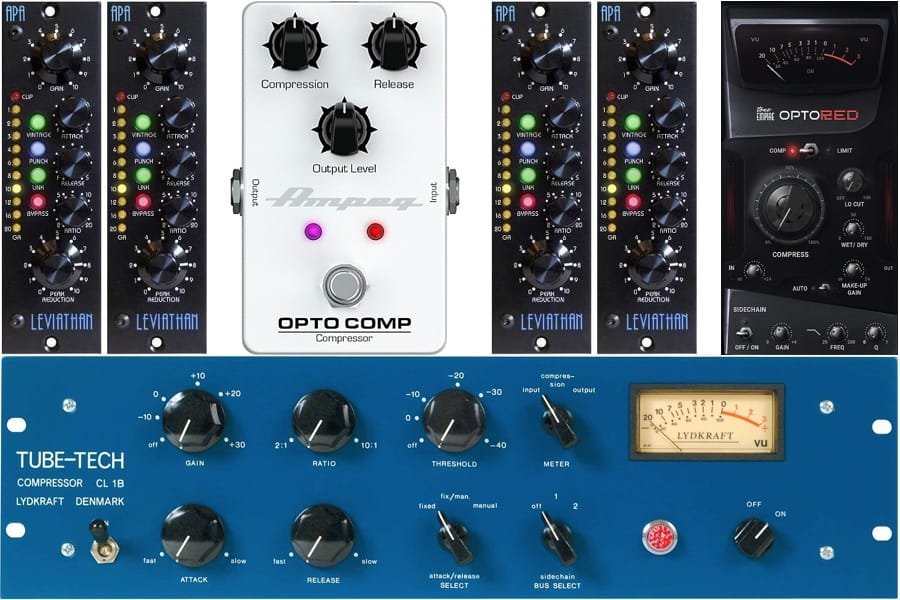Types of Compressors
In the world of audio production, compressors are essential tools that help shape and control the dynamics of audio signals. They come in various types, each with its unique characteristics and applications. In this blog post, we'll explore the four main types of audio compressors: VCA, FET, Opto, and Variable-Mu. Understanding these compressor types will empower you to make informed decisions when it comes to audio processing in your music or audio production projects.
1. VCA Compressors
Voltage-Controlled Amplifier (VCA) compressors are known for their precision and versatility. They use an electronic component called a VCA to control the gain reduction applied to the audio signal. VCA compressors offer fast and accurate response times, making them suitable for a wide range of audio sources, including vocals, drums, and guitars.
Pros:
Fast and precise compression control.
Versatile and suitable for various audio sources.
Well-suited for transparent compression.
Cons:
May lack the character and warmth of other compressor types.
2. FET Compressors
Field-Effect Transistor (FET) compressors are renowned for their ability to add color and character to audio signals. They are known for their fast attack times and distortion characteristics, which can impart a desirable vintage vibe to your audio. FET compressors are often favored for electric guitars, bass, and vocals when a touch of warmth and saturation is desired.
Pros:
Adds color and character to audio.
Fast attack times, suitable for transient-heavy sources.
Excellent for vintage and rock-oriented music.
Cons:
May not be as transparent as VCA compressors.
Limited versatility for certain applications.
3. Opto Compressors
Optical compressors, or "Opto" compressors, use a light-dependent resistor (LDR) and an LED to control compression. These compressors are known for their smooth and gentle compression characteristics, making them ideal for vocals and acoustic instruments. Opto compressors excel at evening out dynamic fluctuations without introducing noticeable artifacts.
Pros:
Smooth and gentle compression.
Well-suited for vocals and acoustic instruments.
Natural and transparent compression.
Cons:
Slower attack times may not be suitable for all audio sources.
Limited versatility for extreme compression settings.
4. Variable-Mu Compressors
Variable-Mu compressors are tube-based compressors known for their warm and vintage sound. They utilize vacuum tubes to control gain reduction, giving them a unique sonic character. Variable-Mu compressors are often favored in mastering studios for their ability to glue a mix together and add a touch of warmth and depth.
Pros:
Warm and vintage sound.
Excellent for mastering and mix bus compression.
Adds depth and character to audio.
Cons:
Slower attack and release times may not be suitable for all applications.
Limited versatility compared to other compressor types.
Conclusion
Choosing the right compressor for your audio production needs depends on the characteristics and coloration you want to impart to your audio. VCA compressors offer precision and transparency, FET compressors add color and character, Opto compressors provide smooth and natural compression, and Variable-Mu compressors deliver warmth and vintage vibe.
Understanding these four main types of audio compressors is crucial for achieving the desired results in your music and audio projects. Experiment with different compressor types to find the perfect fit for each audio source and elevate the quality of your productions.





